Ys IX: Monstrum Nox (PlayStation 4) Review
By Renan Fontes  13.04.2021
13.04.2021

Ys has ebbed and flowed through three distinct phases in the franchise's nearly three and a half decades of history. From 1987 to 1993, Bump Combat ruled supreme - a button-less style of action that kept the original titles' gameplay incredibly fast-paced in comparison to Falcom's contemporaries at the time. After a hiatus spurred by the fifth numbered entry, Ys returned in 2003 sporting the Napishtim Engine: a gameplay system designed around chaining combos and skilfully dodging enemy attacks that added an important layer of verticality to the series' action. The last entry to use the Napishtim Engine released in 2006, before Ys SEVEN redefined the franchise yet again in 2009. Over 10 years since the Seven Engine eased party members and in-depth storytelling into the series, Ys IX: Monstrum Nox reflects not only on how far the franchise has evolved in the past decade, but the roots that define Adol Christin's life as an adventurer.
It's worth noting how the Seven Engine has changed since 2009, along with what exactly distinguishes the gameplay style from the Bump System and Napishtim Engine. Adol originally adventured alone between 1987 and 2005, with Ys Origin setting itself centuries before his birth, and Ys SEVEN introducing proper party members. Previously Adol built up his skill set by collecting new weapons and artefacts, with both The Ark of Napishtim and The Oath in Felghana allowing rotating between distinct elemental blades and magical spells respectively. Ys SEVEN onwards limits what Adol can do by himself, splitting up multiple play styles across multiple playable characters.
The difficulty curve is noticeably lower for modern Ys instalments when compared to pre-Seven Engine ones, although this likely stems from two major gameplay mechanics introduced in SEVEN: dodging, and blocking. Positioning has always been important for boss fights, but now players could quickly dive out of action, or outright parry an attack. Memories of Celceta pushed things into players' favour further by evolving said mechanics into 'Flash Move' and 'Flash Guard,' which both Ys VIII and IX have since kept. Flash Move is a bullet-time-esque ability that slows down enemies if players dodge right before an attack connects. Similarly, Flash Guard turns all attacks into critical hits while refilling the SP gauge if players perfectly block an incoming strike.
One of the Seven Engine's most significant changes is the Attack Attribute system. Each party member has its own Attribute that determines which enemies they are strong against and deal less damage to. Attributes are broken down into three categories: Slash, Strike, and Pierce. Ys SEVEN was fairly strict in regards to Attribute, heavily penalizing players who stuck to the Slash-centric Adol. Strike and Pierce enemies would take so little damage to incentivize character swapping, which in itself is notable, since players now go from swapping between Adol's weapons to swapping between Adol and his comrades. There can be three characters in an active party at any given time, with the design philosophy encouraging players to switch to another type when appropriate.
Memories of Celceta and Lacrimosa of Dana subsequently downplayed the importance of Attributes, with damage penalties negligible enough where strictly playing as Adol isn't unrealistic - a feat still very possible in Monstrum Nox. While most of the Seven Engine's foundation was codified in Ys SEVEN itself, MoC introduced cartography. Much like in a metroidvania, players fill in their map through exploration. Lacrimosa of Dana gave level design even more depth, by transitioning to real 3D gameplay, and reintroducing the jump mechanic from the Napishtim Engine titles. Along with adding a layer of depth to both combat and dungeon design, Ys VIII's greater emphasis on storytelling and character writing set a precedent for IX's even heavier focus on narrative.
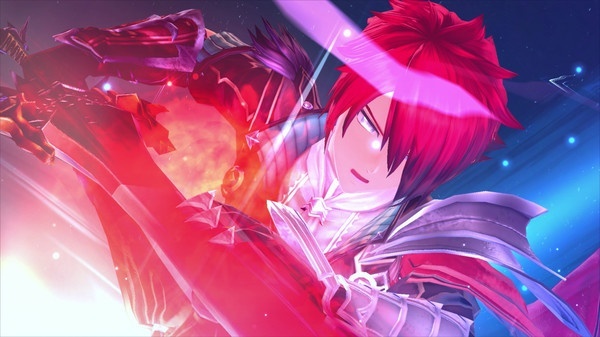
Falcom could have been forgiven for just developing Monstrum Nox off the foundation set by Lacrimosa of Dana, but there are quality of life fixtures in place that lead to some of the franchise's smoothest combat yet. Adol can Double Jump right out the gate, allowing the natural level design to play up verticality immediately, instead of just mid-to late-game. Consequently, this leads to the most sophisticated dungeon and field design of the Seven Engine titles, since there's actual layered geography to explore. SP also passively regenerates now, allowing players to use skills with greater frequency. This might seem like a minor change, but it rebalances combat entirely, and rewards smart skill use over keeping a combo active. Arguably the most useful new addition is the ability to fast travel right away. The Seven Engine games typically lock warping until the halfway point, which has thankfully been done away with - albeit intentionally due to the spacious hub world.
Ys IX takes Adol to Balduq, a Romun occupied Prison City in the heart of Gllia (based on the real world Gaul, now modern day France). Chronologically the latest entry in the timeline, Adol's past adventures catch the attention of the Romun Army, and result in him breaking out of Balduq Prison during the opening sequence. Before Adol can complete his great escape, however, he's enlisted in an endless war against the Grimwald Nox - a curse which keeps him trapped in Balduq until he can discover the mysteries lurking beneath the Prison City. Along with Adol's imprisonment, he's transformed into a Monstrum: a being between man and god whose 'Gifts' offer them abilities that far surpass anything Adol has been previously capable of.
Balduq makes great use out of Adol's Gift - Crimson Line - for traversal purposes. Crimson Line allows Adol to whip himself from vantage points just by looking at them, rewarding players who pay attention to the architecture around them, while also giving camera control a proper gameplay purpose. It's no exaggeration to call Balduq massive and easily the single largest area in the franchise's history, making Crimson Line downright essential for exploration. Along with Balduq being broken down into several districts that slowly open up over the course of the story, Adol can make note of any Graffiti he finds in the city, collect Azure Petal in a side quest that references several of his past adventures, and track down secret treasure rooms that don't count towards map completion.
Aesthetically, Balduq is a bit on the dour side compared to Seiren Island in Ys VIII, but there are benefits to the Prison City unseen in any other Ys. Balduq is genuinely alive with a populace that makes sense, enough houses for everyone to realistically live in, and discernible landmarks that make exploring the map a smooth experience going off sight alone. There are countless shops to peruse, remnants of Gllia's war-torn history to learn about, and a tense atmosphere in the air due to Romn's occupation of the city. Balduq may not have Seiren's beautiful flora or fauna, but its cohesive architecture and attention to detail result in an unforgettable setting.
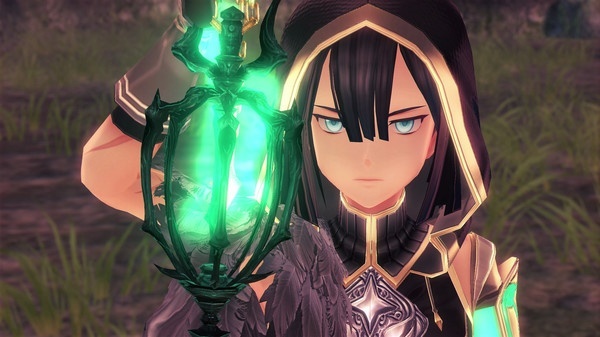
While Adol has Crimson Line, each of his fellow Monstrum have their own unique Gifts. White Cat can use Heaven's Run to dash up walls; Hawk can stretch out his wings into a glide by holding down the jump button after a double jump; Doll's Third Eye ability is basically a Detective Mode which shows any interactable objects, enemies, and chest on the map while dulling all other lighting; Raging Bull's Valkyrie Hammer allows her to charge up powerful attacks; and Renegade's Shadow Dive lets him sink into the ground to slide under narrow passages. Even better, all Gifts are inherent to whoever is being played as. Adol can use every single Gift his Monstrums possess and vice versa, leading to incredibly agile gameplay. Adol can Crimson Line into an enemy, charge up an attack with Valkyrie Hammer to finish them off, and then glide away with Hawk's Hunter Descent.
Coupled with their Gifts, all six Monstrums have their own weapons that influence how they play. As Crimson King, Adol plays similar to how he did in VIII. He's understandably more mobile thanks to all of IX's gameplay quirks, but otherwise Adol's one-handed swordplay is as it was: balanced, with a varied skill kit that boasts a wide range of close and long range techniques. White Cat is a swift close-ranged character who fights with Gauntlets with skills that specialize in stunning enemies; Hawk's sais chain into swift combos and he has some of the best skills for breaking an enemy's guard; Doll's whip-blade is frantically fun to use, and her acrobatic abilities are reminiscent of Dana's play style from her eponymous game; Raging Bull's hammer is slower than other weapons, but she's the strongest party member all around, and Renegade's staff allows him to fight from long-range - offering a fairly unique play style in the process.
Monstrum Nox is the most skill based of the Seven Engine titles, in every sense of the word. Due to the way SP has been rebalanced, character skills get far more play, and most combos are made up of different abilities instead of basic strikes. In terms of reflexes, boss fights are the best they've been in the engine. Not only are several recreations of classic battles from Adol's earlier adventures, Gifts inherently make gameplay more engaging. Savvy players can charge up the Valkyrie Hammer during a skill to immediately raise up SP while dealing heavy damage, or use Crimson Line to teleport from enemy to enemy instead of running. The difficulty curve still doesn't compare to the Napishtim Engine at its best (series veterans are advised to start on Hard or higher), but it's a step in the right direction.
Similar to how Lacrimosa of Dana split gameplay up between Adol's party and Dana's solo segments in the past, players periodically swap control from Crimson King to a different Adol who's been locked up in Balduq Prison. The very nature of these set pieces is central to the story's mystery, with the initial confusion and lack of explanation offered intentionally jarring. Prisoner Adol also doesn't level-up like Dana did, locked at Level 10, and his one piece of equipment is a Rusty Sword that can't even kill everything he encounters. While this might sound unpleasant, Adol's lack of gear and general disadvantage as a prisoner leads to gripping skill based gameplay.
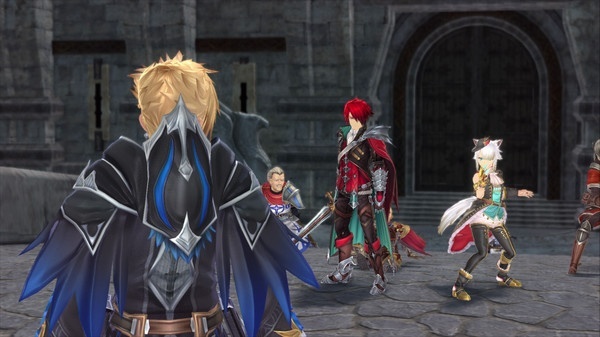
Adol's time as a prisoner takes him deep into the Prison's depths more than once. Unlike Crimson King, Prisoner Adol can only single jump and the prison is dense with traps. It's not uncommon for careless players to run over a switch only to fall into a pit of spikes or get gutted by arrows. Audiences are encouraged to take their take, examine their surroundings, kill only what they can afford to, and craftily get around any enemies Adol can't kill. There unfortunately aren't any bosses for Adol to fight in the prison, but the platforming challenges, tension of being so underequipped, and narrative pay off make up for it. If anything, Ys IX would have benefitted from fleshing out these sections more.
Rounding out combat are the Grimwald Nox Raids, where the Monstrum are pit against waves of monsters. Unlike Ys VIII's Raids, the Grimwald Nox battles are fast paced, with rapid waves that reward players who are able to quickly cut through enemies. There's also a fair bit of variety to the Grimwald Nox between multiple maps and the Lacrimae battles - challenges where players can either destroy all the crystals in the area or kill the boss. There's also a level of agency to approaching the Grimwald Nox. Raids still happen as part of the story, but how they're triggered is at the discretion of the player.
Grimwald Nox miasma only appears after accumulating 100 Nox within Balduq, which can be accomplished by completing side quests or hunting down Nox spawn points. The latter of which are indicated by long beams of green light that fade into a black circle. Several randomly spawn all around Balduq, triggering an impromptu battle in the city when walked through. Clearing out these spawn points helps raise Nox, potentially trigger treasure chests, and mixes some action into an otherwise fully exploratory setting. 100 Nox unlocks Red Miasma that leads into new story-related areas, while 200 Nox unlocks Blue Miasma which opens up secret parts of Balduq and its neighboring fields.
Anyone who prefers not to battle can build up Nox through side quests, but this is one area where Ys IX fumbles quite unexpectedly. With the exception of a few stand outs, most side quests are aggressively bland and overwritten, featuring far more text than the series is used to. This is clearly influenced from Falcom's other line of RPGs - Trails - but shoved into a franchise that historically uses story as set dressing. What's particularly aggravating is how the script mixes in genuine world building and characterization with derivative dialogue that often runs itself in circles. It feels like most side characters speak just to pad out the final word count.
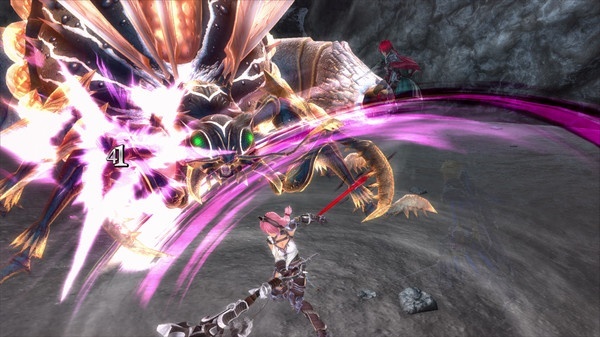
Not helping matters is the lack of unity outside the main cast. Adol and his fellow Monstrums gradually grow their chemistry. They aren't particularly close early on, but their relationship develops organically with time. By the end the Balduq party is as close as Adol was with his Seiren team. The same can't be said for the Dandelion bar crew, who ostensibly fill the same role the rest of the Seiren survivors did - congregating in a central hub where Adol can shop, craft, and take on side quests. Most Dandelion members are painfully one note, and can be boiled down to tired archetypes. Ys doesn't shy away from cliches, but Balduq's supporting cast are written so juvenile at times, it's hard to believe the Monstrums come out of the same story.
…Which isn't to say the main plot doesn't have problems, because it certainly does. Monstrum Nox's story is reasonably disappointing after Lacrimosa of Dana set the bar so high. The last act is amazing, and has one of the best endings in the series (especially for fans who have been with the franchise for a while), but the opening is poorly paced, the central mystery, while captivating, is teased in an awkward manner, and dedicating a whole chapter to each party member's recruitment is an exercise in futility that repeatedly robs the narrative of dramatic urgency. The story is able to get by tackling themes of identity in a tactful manner, while fleshing out the series' version of the real Hundred Years' War, but the final script could have been so much better.
Balduq's villains unfortunately leave a lot to be desired, as well. Chatelard is a zealot with a vendetta against Romn, but his charisma and tragic backstory make him a well-rounded antagonist… only for his characterization to be grounded in scoring characters on their performance, clashing perfectly human motivations, with lazy quirks that speak of insecure writing. Ingrid doesn't fare much better; a Romum paranormal investigator who interrogates Adol at the start of the story. Not only is she painfully underused after so much early set up, Ingrid's character immediately devolves into two quirks: shouting "preposterous" and running away in a huff. Unlike Chatelard who at least has a solid arc in spite of everything, Ingrid sticks out as a sore thumb. The series' villains aren't always the most in-depth, but they used to be characters, not caricatures.
For as flawed as Monstrum Nox's plotting is, the actual story is an ode to the franchise unlike anything Ys has seen. There are subtle references to almost all of Adol's previous adventures, with their consequences directly influencing the course of the narrative. With this in mind, IX isn't an ideal entry point for beginners. Adol is particularly self-reflective and several dialogue options directly allude to older titles. A newcomer won't find themselves lost, but they won't be able to appreciate how dense with fanservice the overall plot is. Nor the significance of everything that happens with Adol in the grand scheme of things. The resolution to the central mystery hits hardest with an understanding of the franchise's chronology.
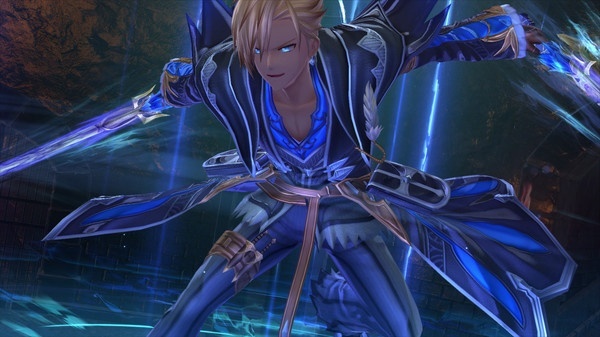
All of Adol's adventures end with him moving on to greater things, and after four games into the Seven Engine, it does feel like time to move on. VIII seemingly brought the style to a fitting close only for IX to push things one step further: dungeons are the best they've been in ages and the action is addicting in all the right ways. Gameplay-wise, Monstrum Nox is one of the best entries in the franchise thanks to combat depth that comes close to reaching Napishtim levels. Narratively, however, the Seven Engine is starting to take its toll on the series. Cut-scenes are becoming too abundant, and subtle world building is all but gone in exchange for bombastic storytelling.
For what it's worth, Monstrum Nox's story is only as disappointing as it is because of its potential. Engrossing villains are undermined by childish writing, side quests are exhausting, and dialogue is starting to repeat itself, something the series has done a fine job at avoiding up to this point. Falcom built the franchise on brisk pacing that's all but gone now. At the same time, Ys IX is a genuine evolution of everything that came before it in terms of gameplay, arguably reaching the natural apex of the Seven Engine. Not just that, the story juggles its most delicate themes and political nuances with mature framing that speaks to Adol's experience as an adventurer. Adol's reflections in Balduq make it easy to look back on how the franchise - both good and bad - but what's important is that the series is still trying to change.
Gifts are an extremely creative way of revamping Lacrimosa of Dana's combat, and fundamentally reshaping level design, in turn giving the cartography aspect of gameplay even more depth. The story is ambitious even when it stumbles, focusing on what it means to be alive with a surprising amount of maturity, all while the tragedy of Jeanne d'Arc serves as a key source of inspiration for the backstory. The RPG may not live up to its full potential, but IX would be the perfect note to close the Seven Engine out on. Even with its awkward pacing and intrusive storytelling, Monstrum Nox gets the heart of Ys just right - frantic combat, top notch dungeon design, and a penchant for adventure.
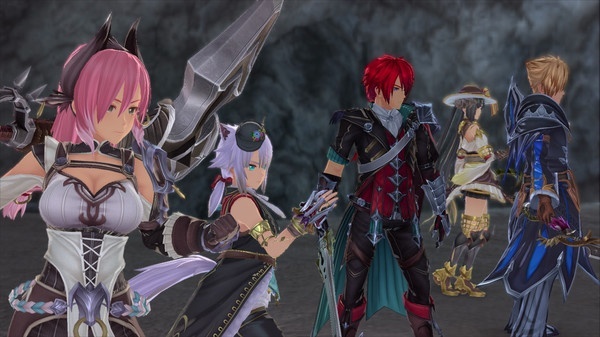
Cubed3 Rating
Great - Silver Award

Newcomers risk drowning in a sea of references, while franchise veterans are bound to be put off by more cut-scenes than the series is known for, but Ys IX: Monstrum Nox is an astonishingly addictive action-RPG that just gets better as it goes on. A rough opening and choppy plotting undersell a genuinely gripping mystery that reflects on Adol's history as an adventure, culminating in an incredible last act. Falcom's dungeon design is the best it's been in years and the numerous gameplay additions made to combat bring the Seven Engine close to capturing the same highs that defined the Napishtim era. Monstrum Nox may not live up to its narrative potential, but Ys IX's gameplay only leaves one thing to be desired: more.

![]() 8/10
8/10
![]() 0
(0 Votes)
0
(0 Votes)
 Out now
Out now  Out now
Out now  Out now
Out now  Out now
Out now Comments
Comments are currently disabled

 Sign In
Sign In Game Details
Game Details Subscribe to this topic
Subscribe to this topic Features
Features





 Top
Top

